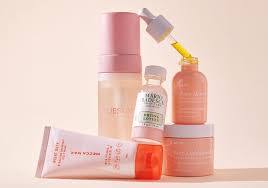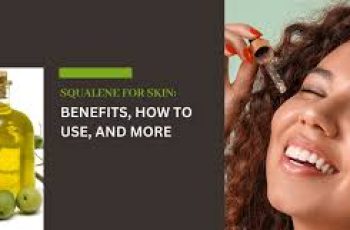Why Changing Up Your Skincare Routine Too Often Can Hurt Your Skin
It’s really hard to resist the euphoria you feel when you buy and try new skincare products. No matter how established and reliable your daily routine is, there’s something so magical about those “Just Got It!” emails. They turn all our arms to rubber.
But are we (our wallets, our minds, our skin, everything) better off if we commit to a long-term relationship with our skincare? Are we wasting results if we change up our routine too often?
To set the record straight, I asked Sieanna Pardi, a dermatologist at North Sydney Dermatology and founder of Raw Skin Insider, a bunch of questions.
How long after launching a new product will I start seeing skincare results?
“Your skin care routine is like starting a new healthy habit. Good habits and routines take time to see results. The same rule applies to your skin care routine; my rule is that you need to care for your skin for at least three months before you see healthy changes.
Our skin takes 28 days to complete cell turnover, the older we get, the slower the epidermal cells react, so 28 days becomes 38, 48, 58… The first and easiest change you can make to see results is to invest in the right cleansers and moisturizers. The next step to improving your daily habits is to use a serum. (Remember, serums contain active ingredients that need time to penetrate deep enough into the skin to see a noticeable difference. Another reason why it’s important to wait three months when testing new products.)
What happens to my skin during this time?
“During this time, what is called detoxification may occur. This can happen whenever we introduce a new product in our skin care routine. Detoxification is defined as the process by which your skin adjusts to the new ingredients, and this change may result in more breakouts. The skin may feel oilier for a while, and the texture may also feel a little rough. This is completely normal during the first 6-8 weeks after introducing a new product.
This is because your skin cells are now turning over faster than usual. I would say, out with the old, in with the new you! For some people, the opposite effect may occur and their skin will immediately feel amazing. ”
How do I really know if my skin is liking the product?
“In simple terms, your skin will start to look and feel better. When your skin starts to change and you notice more activity on the surface or see subtle changes visually, such as: increased radiance, increased skin brightness, less inflammation and redness, oiliness starting to appear, some breakouts (think cleansing), smoother texture, skin is more resistant to environmental factors. That’s good.
But if you notice: increased inflammation, irritation, tenderness, dryness, cystic breakouts. That’s not good. You should stop using these products and consult your trusted dermatologist immediately. ”
Let’s say after three weeks I change my mind and try a different product. What does this do to my skin?
“You’re not letting the product or your skin work its magic! And it’s causing more harm than good. If you change your products and your routine too often, you’re tricking your skin and forcing you to make too many changes. Continuous use of all these different formulas/ingredients tends to negatively impact the skin barrier and make skin issues worse.
Treat your skin like you would your gut. You wouldn’t eat a buffet every night, try a little of this, a little of that, so why do the same for your skin? Nourishing your gut with whole food ingredients as much as you can reasonably will make you feel well nourished. So do the same for your skin. ”
So when does it make the most sense to update your routine?
“If it’s working for you, there’s no reason to change. You should only change your routine if you’ve switched your skincare to stronger or more active ingredients as recommended. You can update your routine if your skin issues change (not just because everyone else is using the latest serum), if you’re no longer seeing results, or if you feel like your skin isn’t getting the nutrients it needs.
However, keep in mind that most skin types also need to adjust their routines based on the seasons. I always have a winter and summer routine. Environmental changes can cause our skin to get drier in the winter and oilier in the summer. It’s always good to have two care routines to support our skin through the ever-changing seasons and lifestyles. ”
Stick to what you know (and love!) and your skin will thank you.
DQH Knowledge drop: In your 20s, your skin cell turnover decreases. (Cell turnover is a key component in keeping your skin youthful.) You know what else slows down? Your collagen production. Starting in your 20s, collagen decreases by about 1 percent per year. Should you want to prevent fine lines and wrinkles, start by eliminating behaviors that contribute to premature aging. “If it’s bad for you, it’s bad for your skin,” says dermatologist Michel Somenek.
“Cigarette smoking reduces blood flow to the skin and causes premature wrinkling and a dull skin texture. Making the repeated pursed motion to inhale can also cause smoker’s lines. Alcohol and recreational drugs are toxins for the skin that damage its cellular structure and DNA,” Somenek tells us. “The faster you eliminate vices while you are young, the better chance your skin and body have to recuperate.” Also, adopting an anti-aging routine in your 20s is key. After all, the best offense is a good defense. We spoke to Somenek and experts Joshua Ross and Audrey Kunin to find out more.
Keep reading for the best anti-aging products for your 20s, according to skincare professionals.
Sunscreen
“We all know that the sun is the number one cause of skin aging and starting the prevention in your 20s is very important,” Ross says. “The majority of your sun damage won’t start to appear until you’re in your 30s, so don’t wait until you see it surface or you’ll be behind the curve. Stay ahead of it with a good-quality zinc-based sunscreen worn daily.”
Farmacy Green Defense Daily Mineral Sunscreen
An invisible sunscreen with SPF 30, plus botanical extracts meant to protect skin with tons of antioxidants. Bonus: It’s clean and fine to use under makeup.
Bareminerals Complexion Rescue™ Tinted Moisturizer Broad Spectrum SPF 30
Although we recommend you use your SPF and moisturizer separately, we also understand moments when you don’t have time or energy for that extra step. For those times, this bareMinerals moisturizer is a great thing to have on hand.
Vitamin C Serum
“A great introduction to anti-aging is to start with a vitamin C serum in your morning skincare routine,” Ross says. “It’s a powerful antioxidant that will neutralize free radicals and brighten the skin.” He adds that it’s a great way to counteract the effects of the sun’s harmful rays, which, as previously mentioned, are among the biggest causes of premature aging.
Drunk Elephant C-Firma™ Vitamin C Day Serum
The Drunk Elephant C-Firma is a lightweight serum that promises to give skin a glow by combining the brightening powers of vitamin C with ferulic acid, l-ascorbic acid, and vitamin E. The included sodium hyaluronate is meant to replace hydration loss, so you shouldn’t have to deal with any irritation.
Sunday Riley C.E.O. Rapid Flash Brightening Serum
This potent serum is jam-packed with vitamin C (15 percent, to be exact), which means it’s a potential superstar at both brightening skin and dousing it in antioxidants.
Peptides
Using peptides on your skin has many benefits, says Somenek. “The skin barrier is what defends the body against pollution, UV rays, bacteria, and toxins. It can be damaged by several everyday factors. Using topical peptides aids in building a stronger barrier,” he says. “Peptides comprise elastic fibers, which are a type of protein. These fibers help to make skin appear taut and firm. Peptides can also help repair damaged skin, relieve inflammation, and even out skin tone. Some peptides can kill acne-causing bacteria that is common in 20-somethings.”
Kunin agrees, saying, “Peptides are an excellent entry point for supporting collagen.” She recommends looking for face and eye treatments that contain these collagen-boosting powerhouses.
Charlotte Tilbury Magic Eye Rescue Cream
This Charlotte Tilbury super-emollient eye cream has a base of coconut oil and shea butter (read: it’s incredibly hydrating). Botanicals plus peptides are meant to help reduce dark circles and boost collagen, respectively.
This creamy moisturizer serves up potent collagen-boosting peptides and pycnogenol, and antioxidant-rich vitamin C. “Instead of sitting on top of the skin, peptides penetrate the outer layer so they go deep. The ‘signals’ they send tell the cells to produce elastin and collagen, which are needed for youthful-looking skin,” explains Somenek.
At-Home Peel Pads
Remember that skin cell turnover fiasco we talked about earlier? One way to help support it is by exfoliating. “Exfoliation is important to help keep skin fresh and luminous,” Kunin says. She recommends using at-home peel pads as an easy and effective way to exfoliate.
“The goal in your 20s is to fight the slowing pace of cell turnover. It is wise to use products that gently exfoliate, yet still remove oil and other impurities. Products that have Alpha Hydroxy Acids (AHA) or Beta Hydroxy Acids (BHA) are a good choice.”
According to Somenek, you should only exfoliate two to three times a week. “People of all ages are guilty of over-exfoliating and that can be too much of a good thing,” he says.
Dermadoctor Kakadu C Intensive Vitamin C Peel Pad
A few swipes of this Derma Doctor powerful peel pad promise to leave your skin glowing and smooth, thanks to the seven (yes, seven) types of chemical exfoliants, including AHA and BHA. It also contains vitamin C via Kakadu plum extract for added brightening and antioxidant protection.
KEY INGREDIENTS Kakadu plum extract is sourced from the Kakadu plum, a fruit grown in northern Australia. It contains vitamin C, which restores the skin’s natural barrier, increases collagen production, and soothes irritation.
Dr. Dennis Gross Skincare Alpha Beta® Universal Daily Peel Pads
These are the gold standard of peel pads, with a cult following and over 900 five-star reviews on Sephora. They’re easy to use and contain a blend of anti-aging exfoliating acids.
Emollient Night Cream
“In your 20s, you need to start upping the hydration in your skincare routine. You may have been cautious of over-moisturizing because of acne in your teens, but as you enter your 20s, your skin transitions and becomes drier,” Ross says. “I recommend an emollient night cream added into your evening skincare regimen.”
“Twenty-somethings need to make sure that they are not using creams that will clog their pores and cause excess oil production,” says Somenek. Opt for non-comedogenic products.
Cerave Skin Renewing Night Cream
One great choice is the CeraVe Skin Renewing Night Cream, which is a non-comedogenic night cream that leaves skin soft and glowy. It combines the moisturizing powers of ceramides and hyaluronic acid.
RoC Retinol Correxion Max Hydration Creme
“The best night cream ingredients contain retinol, benzoyl peroxide, and/or salicylic acid or hyaluronic acid. The goal is to moisturize, yet remove excess oil,” says Somenek. This Roc Retinol Correxion cream fits the bill as it contains both hyaluronic acid and retinol so it promises to moisturize while also being non-comedogenic.



